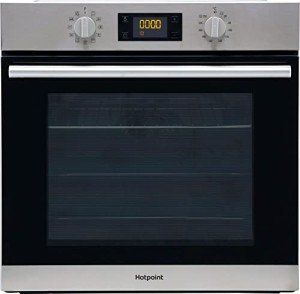The Comprehensive Guide to Single Built-In Ovens: Features, Benefits, and FAQs
Intro
In contemporary kitchen areas, the integration of devices is crucial to accomplishing a structured design. Amongst these devices, the built-in oven stands out as a staple for everyday cooking. In specific, single built-in ovens are gaining appeal due to their space-saving style and performance. This post explores the functions, benefits, and frequently asked concerns about single built-in ovens, assisting homeowners make informed options.
What is a Single Built-In Oven?
A single built-in oven is a cooking appliance created to be embedded within cabinets, providing a seamless look that complements the kitchen's visual. Unlike freestanding Integrated Single Oven , built-in versions use a variety of functions and designs that cater to modern-day culinary needs.
Secret Features of a Single Built-In Oven
Single built-in ovens included a variety of features that improve performance and user experience. Here are some of the most crucial characteristics:
| Feature | Description |
|---|---|
| Size and Capacity | Typically ranges from 24 to 30 inches in width; appropriate for numerous kitchen sizes. |
| Cooking Modes | Several settings, including convection, baking, broiling, and sometimes steam cooking. |
| Controls | Digital touch controls or conventional knobs with accurate temperature level settings. |
| Self-Cleaning Options | Numerous models include self-cleaning functions for much easier upkeep. |
| Energy Efficiency | Designed to consume less energy, typically with an A+ energy score. |
| Security Features | Consists of kid locks, cooling systems, and temperature sensing units. |
| Design Options | Available in numerous surfaces (stainless-steel, black, etc) and styles (contemporary, timeless). |
Benefits of Using a Single Built-In Oven
The adoption of single built-in ovens uses many advantages:
- Aesthetics: They produce a modern and refined appearance in the kitchen, mixing seamlessly with cabinetry.
- Space-Saving: Ideal for smaller kitchens, they are developed to enhance space by being built into walls or cabinets.
- Increased Functionality: Many models come with sophisticated cooking innovation such as wise functions that allow push-button control by means of smartphone.
- Easy to Use: With user-friendly controls, built-in ovens are easy to use and ideal for both newbie and experienced cooks.
- Improved Cooking Performance: Convection models distribute hot air for even cooking results.
Popular Brands and Models
Numerous brand names dominate the single built-in oven market, each offering distinct features to cater to customer choices. Here are some noteworthy ones:
| Brand | Popular Models | Key Features |
|---|---|---|
| Bosch | HBN8451UC, HBL8453UC | European style, convection heat, Wi-Fi connectivity. |
| Electrolux | E30SO75GPS, E30SO75PPS | Variations in size, advanced grilling capabilities. |
| Samsung | NV51K6650SG | Double convection, wise innovation, versatile cooking modes. |
| Whirlpool | WOS51EC0HS | Affordable, reputable, self-cleaning functions. |
| LG | LWS3063ST | Smart technology, air fry mode, streamlined aesthetics. |
Installation Considerations
Setting up a single built-in oven includes specific considerations:
- Measurement: Ensure that the space allotted is compatible with the oven's dimensions.
- Ventilation: Adequate airflow needs to be preserved for security and performance.
- Electrical Needs: Check voltage requirements and make sure correct electrical outlets are available.
- Professional Installation: While some property owners may select DIY, hiring an expert can mitigate installation concerns.
Frequently Asked Questions (FAQs)
How much space is required for a built-in oven?
- A built-in oven usually requires a designated space that differs by design, typically from 24 to 30 inches in width. Constantly describe the manufacturer's specifications for accurate measurements.
Can I install a built-in oven by myself?
- While some may attempt a DIY installation, it is frequently suggested to work with an expert to make sure appropriate fitting, electrical connections, and ventilation.
Are single built-in ovens more expensive than freestanding models?
- Usually, yes. Single built-in ovens tend to cost more due to their design, setup, and extra features.
What are the distinctions between convection and regular ovens?
- Stove have a fan that flows hot air throughout, resulting in even cooking. Conventional ovens count on convected heat, which may cause locations and irregular cooking.
What upkeep is needed for a built-in oven?
- Regular cleansing, ensuring vents remain unobstructed, and keeping an eye on functions. Many models use self-cleaning choices, which simplify upkeep.
Single built-in ovens represent a merging of design, convenience, and efficiency in contemporary cooking areas. With a huge selection of features and designs available, these ovens cater to various cooking needs and preferences. Whether you are an aspiring chef or a periodic home cook, purchasing an appropriate single built-in oven can improve your cooking experience while elevating your kitchen's aesthetic. Mindful consideration of functions, setup requirements, and upkeep will cause a satisfying investment in this important kitchen device.

